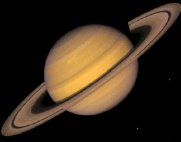
Worksheets and No Prep Teaching Resources
Reading Comprehension Worksheets
Solar System

Solar System
 Worksheets and No Prep Teaching Resources Reading Comprehension Worksheets Solar System |
 Solar System |
| edHelper's suggested reading level: | grades 7 to 8 | |
| Flesch-Kincaid grade level: | 6.93 |
|
Saturn
By Sharon Fabian |

|
 1 Saturn is a favorite of people who have a telescope to look at the sky. Other planets are visible through a telescope on Earth, and so is the moon, but Saturn always seems to be the most popular.
1 Saturn is a favorite of people who have a telescope to look at the sky. Other planets are visible through a telescope on Earth, and so is the moon, but Saturn always seems to be the most popular. |
Create Weekly Reading Books
Prepare for an entire week at once! |
| Leave your feedback on Saturn (use this link if you found an error in the story) |
 |
Solar System
|
 |
Science
|